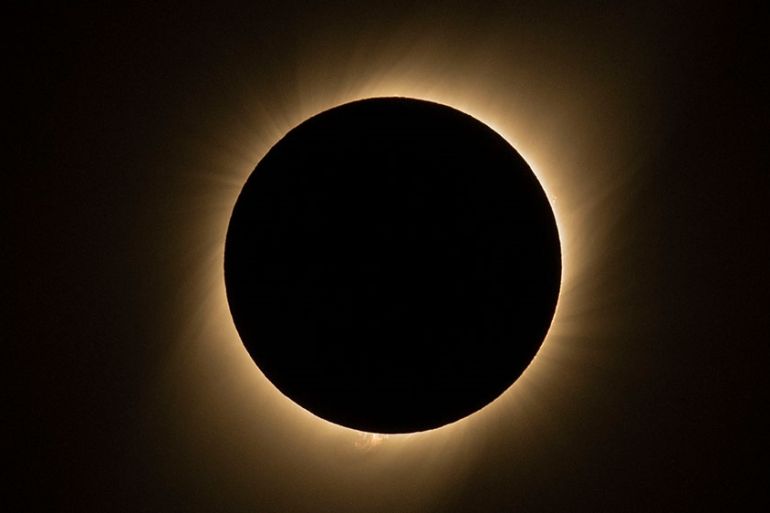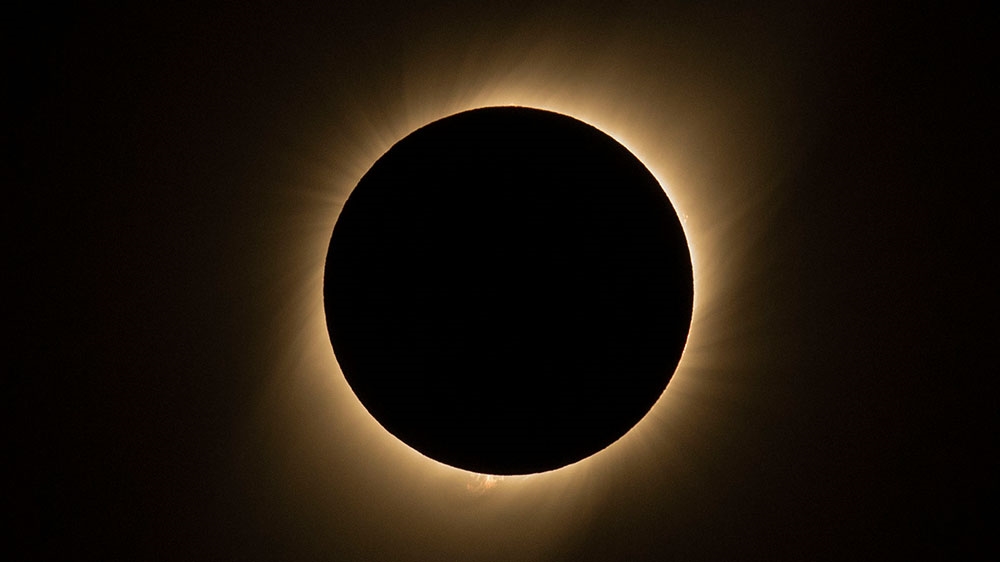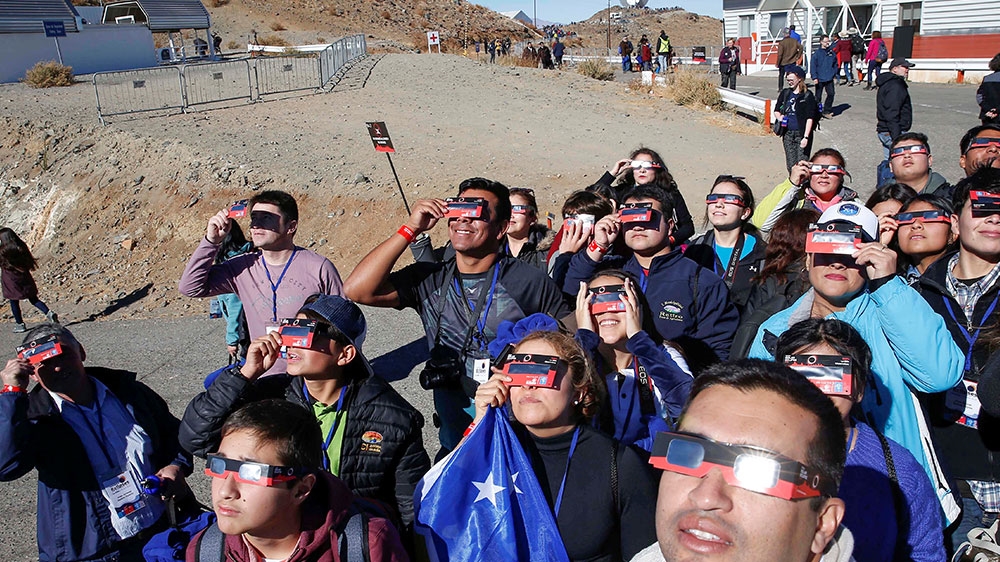Total solar eclipse 2019: First photos of the phenomenon
The first total solar eclipse since 2017 passes over parts of South America.

Tourists from all over the world have flocked to cities and towns across northern Chile and Argentina to catch a glimpse of the first total solar eclipse since 2017.
Millions were expected to gaze at the cosmic spectacle that began at 10:24am local time (18:24 GMT) on Tuesday in the South Pacific and swept along a path extending 11,000km across open waters to Chile and Argentina, the only places that the total eclipse will be seen aside from an uninhabited island out in the ocean.
Keep reading
list of 4 itemsAfter the Hurricane
World’s coral reefs face global bleaching crisis
Why is Germany maintaining economic ties with China?
It is the first total solar eclipse since August 2017, when the moon passed between Earth and the sun over parts of the United States.
Here’s a look at the first photos of this year’s celestial phenomenon.



A solar eclipse occurs when the moon passes between the sun and Earth and blocks the sun. During a total eclipse, the sun’s crown, or corona, is visible to the naked eye.
The crown is the sun’s outer atmosphere, stretching millions of miles into space.
There are four types of solar eclipses: partial, annular, total and hybrid.
According to NASA, a total eclipse occurs somewhere on Earth about every year and a half. Partial eclipses are expected at least twice a year.

During totality, it is safe to view a solar eclipse.
However, as the moon reveals the sun, NASA said, people may be caught off guard, exposing their eyes to possible damage from the sun’s ultraviolet rays.
NASA advises individuals watching the eclipse to use protective glasses or indirect viewing devices during all the phases.
